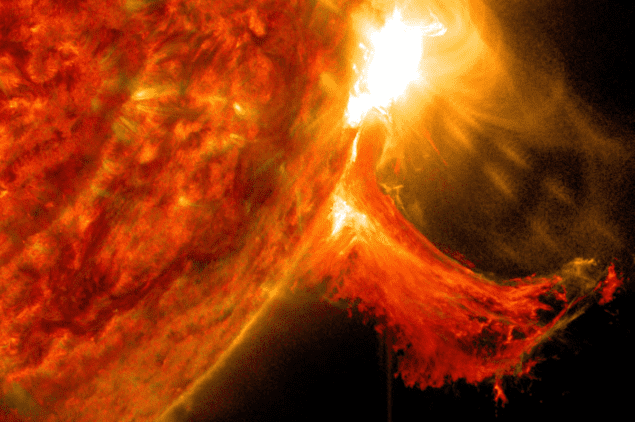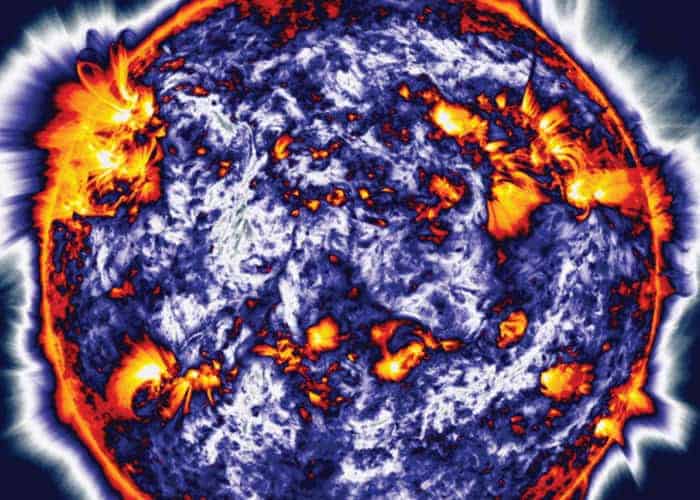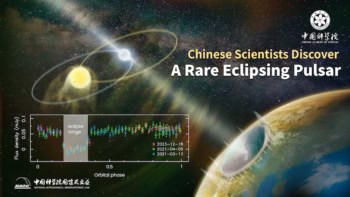
A model that predicts when and where large solar flares will occur has been developed by a team led by Kanya Kusano at Japan’s Nagoya University. Their technique works by monitoring regions of high magnetic activity on the Sun’s surface and focusses on the instabilities triggered by reconnecting magnetic fields. Called the “κ-scheme”, their model could soon be part of an early warning system for incoming solar storms.
Solar flares are bright flashes on the Sun’s surface and are among the most dramatic and fascinating events in the solar system. Although the conditions that trigger them are still unknown, flares are often associated with the “active regions” close to visible sunspots. These regions contain strong magnetic fields that store vast amounts of energy. When the topologies of these fields change suddenly, this energy is violently released; often resulting in powerful bursts of X-rays, plasma, and energetic particles.
Known as coronal mass ejections, these bursts can trigger powerful solar storms if they interact with Earth’s upper atmosphere – risking the safety of astronauts, spacecraft and satellites, as well as electrical grids and radio communications on Earth. It is critical, therefore, that we can predict precisely when and where solar flares will occur. Currently, however, early warning systems are limited in their efficacy because they rely on empirical models that cannot fully capture the complex, multi-scale processes associated with solar flare formation.
Double-arc loop
Kusano’s team has taken a new approach based around the process of “double-arc instability”. In their κ-scheme model, two surface regions with opposite magnetic flux are connected by two current-carrying loops of magnetic field lines. Due to shearing, these loops become crossed and reconnect with each other, forming a single, double-arc loop. This field line then moves upwards as the instability grows, allowing further, smaller pairs of loops to reconnect underneath it. Over time, this creates a positive feedback loop that ultimately releases vast amounts of energy.

What if a solar super-storm hit?
To test κ-scheme, Kusano and colleagues used the model to analyse 205 active regions on the Sun that were monitored by NASA’s Solar Dynamics Observatory between 2006-2019. Overall, seven of these regions were responsible for solar flares powerful enough to trigger long-lasting storms on Earth. By monitoring the location and time evolution of each region, the κ-scheme accurately predicted when most of these flares would occur, up to 24 h in advance.
The model failed in its prediction of just two flares, which came from one specific active region that produced large flares without any accompanying mass ejections. Kusano’s team now hope to improve the κ-scheme’s predictions through upcoming observations from the 4 m Daniel K Inouye Solar Telescope, which first began operation in December 2019. The instrument will measure the Sun’s magnetic field structures and dynamics with unprecedented resolution, potentially allowing the team to produce far better forecasts of when and where flares will occur.
The research is described in Science.



